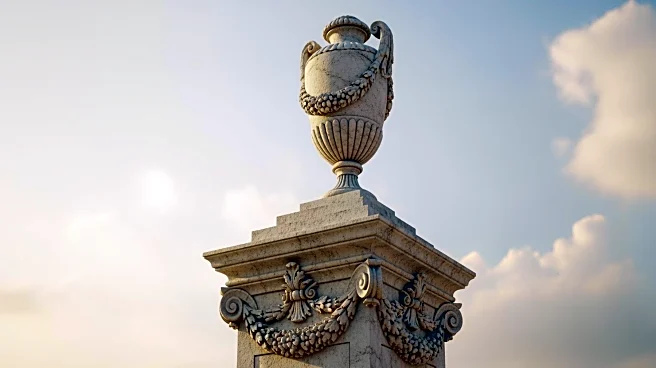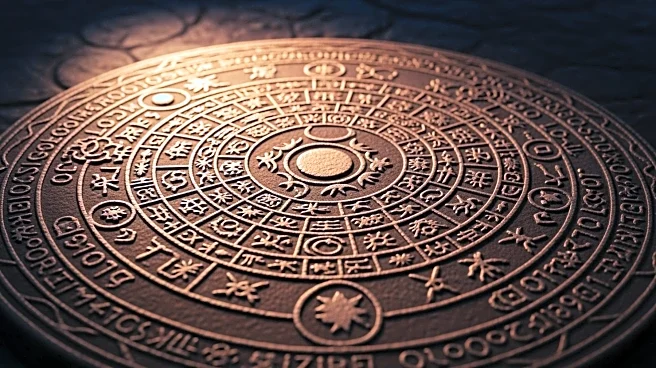What's Happening?
A recent archaeological study has uncovered a vast pre-Maya earthwork in southern Mexico, believed to be a 'cosmogram' or a map of the cosmos. The site, known as Aguada Fénix, dates back 3,000 years and
features a massive ceremonial complex aligned with the sun's movement and cardinal directions. Using Lidar technology, researchers identified the site as a monumental structure designed for solar observations and community gatherings. Excavations revealed jade and greenstone ornaments, suggesting symbolic rather than practical use of the site. The discovery provides insights into early Mesoamerican cosmological ideas and architectural practices.
Why It's Important?
The discovery of Aguada Fénix as a potential cosmogram offers significant insights into the cosmological beliefs and architectural practices of early Mesoamerican societies. It highlights the sophistication of these communities in using monumental architecture to convey shared cosmological ideas long before the rise of dynastic power. This finding enriches our understanding of pre-Maya cultures and their contributions to the development of complex societies in the Americas. It also underscores the importance of preserving archaeological sites as they provide valuable information about human history and cultural evolution.
Beyond the Headlines
The debate over whether Aguada Fénix can be defined as a cosmogram reflects broader discussions in archaeology about interpreting ancient sites and their cultural significance. The study challenges researchers to refine their methodologies and definitions, fostering academic discourse and collaboration. Additionally, the discovery may influence future archaeological research in the region, encouraging the use of advanced technologies like Lidar to uncover hidden structures and expand our knowledge of ancient civilizations.













